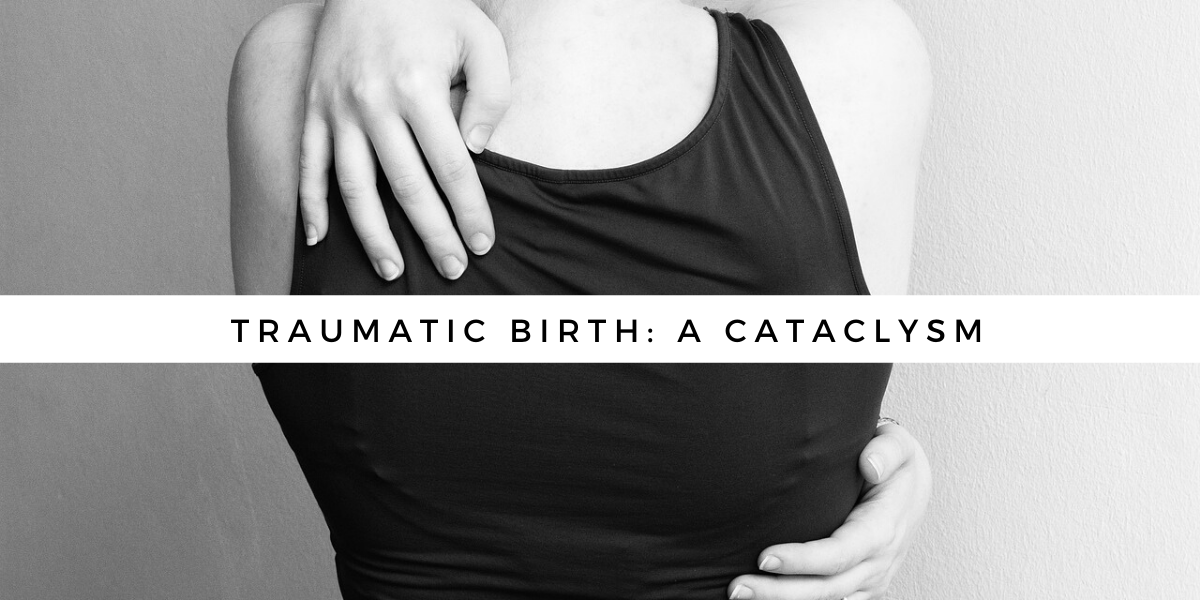A traumatic birth can be cataclysmic. To describe a traumatic birth as a cataclysm may sound overly dramatic to some, but in reality it is deadly accurate. A cataclysm is an event that causes significant destruction or a sudden, violent change, and a traumatic birth matches both of these definitions.
There are many forms of traumatic birth, and all of them affect both the body and the mind. Birth – a much-anticipated and longed-for event, suffused with positive emotion – can morph to become an event of pronounced anguish and physical suffering. Getting good psychological care and support is paramount at this time. Accepting help, reaching out to family and friends, and accessing professional psychological care is critical.
It is common practice – in some societies, at least – to recommend professional psychological help after a traumatic birth. This recommendation, though, may not always be as timely or practical as you need it to be. Even less, however, is physical help recommended. Yet gaining physical help and support as early as possible after traumatic birth is almost as critical.
How do you know you’ve had a traumatic birth?
A traumatic birth can take many forms. The level of trauma experienced for different events can vary from woman to woman, but traumatic birth events might include:
- When your baby doesn’t survive
- Catastrophic injury to yourself or the baby
- Severe perineal tearing
- Injury to the anal sphincter – a 3rd- or 4th-degree tear
- An emergency hysterectomy
- High blood loss of over half a litre
- Avulsion injury of the levator ani (pelvic floor muscles)
- If you had your placenta pulled out strongly by hand
- If you remember a birth attendant stepping on or putting major force on your abdomen
- If you felt extreme pain, anxiety or terror
(Interlude: these things can be tough to read about. They are certainly tough if you recognise them because you went through them. But reading about them can be tough even if they happened to someone else because you feel compassion, and they might remind you of your own suffering. If you are struggling reading this blog post, please stop reading now, go make yourself a cup of tea, and connect with a trusted loved one, psychological health professional, or Google a support group for birth trauma. I’m aiming to help left the burden of your problems with this article, not add to them. If you feel able, keep reading.)
Some forms of traumatic birth result in immediate incontinence (bladder, bowel or both) after the birth. Others result in a prolapse of your internal organs, either during the birth or shortly after. Sometimes these effects are lasting, or don’t start until later. You might be wetting yourself or losing control of your bowel motions. You might be frustrated and disappointed by the inability to have sex comfortably months after the birth. You might feel terrified that something feels like it’s “falling out” of your vagina. Your body might feel nothing like your own. You might feel disconnected from it or that you want nothing to do with it.
How do you support yourself physically after a traumatic birth?
The most important thing is to do something, not do nothing. Educate yourself to start with; please arm yourself with the information from my series of articles on Battling Birth Trauma. Then seek professional help.
Physiotherapists working in the area of birth are an ideal place to start. They are usually very caring and very knowledgeable about traumatic births. Make sure, though, that you choose a pelvic floor physiotherapist, not a general physio you find in a sports injury or musculoskeletal clinic. Ask about the physio’s experience and ability to help you.
I have spent over twenty years helping women recover from traumatic births. Please reach out; if you are in (or can get to) the greater Brisbane area, I can help you.

